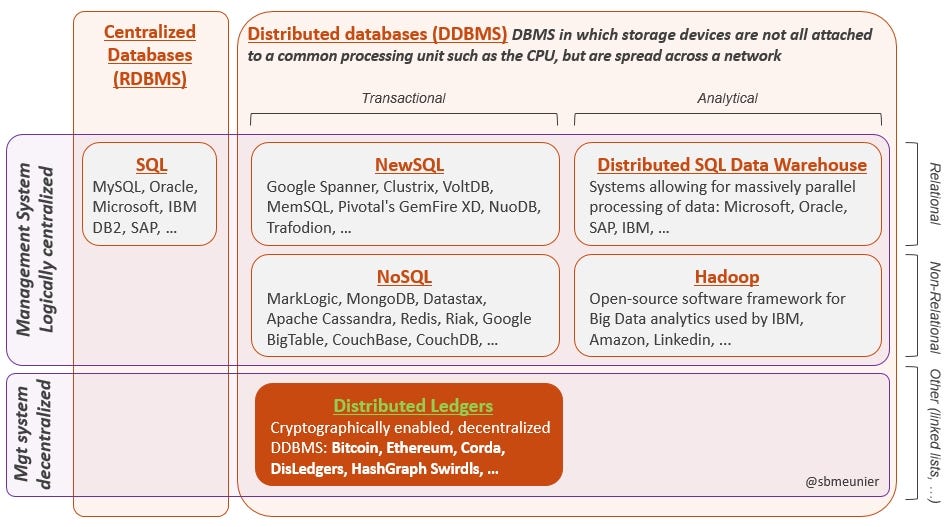Research, screen.is
Distributed Database (DDBMS)
When the storage devices for data are spread across a network. "DDBMS use consensus mechanisms to ensure fault-tolerant communications, and provide concurrency control through locking and/or time-stamping mechanisms." (ref).

DDBMS include:
- Peer Network Node Data Stores, using peer-to-peer methods like BitTorrent, NNTP, Freenet, Mnet.
- Distributed SQL data warehouses allow for parrallel processing on massive datasets.
- Hadoop, works "on clusters of commodity hardware. It provides massive storage for any kind of data, enormous processing power and the ability to handle virtually limitless concurrent tasks."
- NoSQL databases are horizontally scalable, non-relational DDBMS, and include: MarkLogic, MongoDB, Datastax, Apache Cassandra, Redis, Riak, Google BigTable and CouchDB.
- NewSQL, combining qualities of NoSQL with traditional relational (RDBMS) dbses, including Google Spanner, Clustrix, VoltDB, MemSQL, Pivotal’s GemFire XD, NuoDB and Trafodion.
- Distributed Ledgers (DL), e.g. Bitcoin, which don't have any kind of central control (unlike NewSQL, NoSQL, etc).
- R3 Corda is a distributed ledger designed to operate in regulated environments with a limited number of known participants where consensus about a transaction is basically reduced to its validation by the two contracting parties.
- Hashgraph is a distributed ledger using a gossip protocol, to share information across a network. It's faster, more decentralised, and less energy intensive the proof-of-work and proof-of-stake ledgers. BUT fully proprietary, deployment of apps depends on permission from the developers and owners Swirlds.com. https://www.swirlds.com/resources/
- [[Holochain]] - like Hashgraph uses Gossip, but isn't closed.
- [[Big Chain DB]]